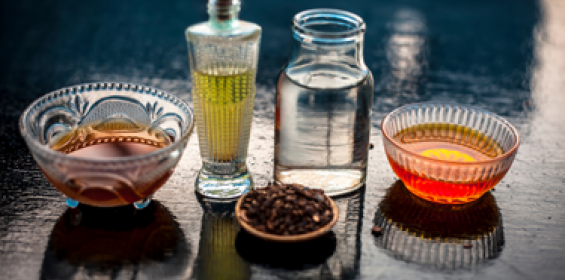Amazing facts about India
Modern rockets are popularly attributed to the American, Dr. Robert Hutchings Goddard, in whose recognition the space research center of NASA in the USA has been named, the Goddard Space Flight Center.
However, the earliest systematized use of a rocket for military purpose is associated with India. In the 1790s, a series of Anglo-Mysore wars were fought between the fledgling British presence and the kingdom of Mysore, under Tipu Sultan. His armory included a new type of weaponry hitherto unknown to the British army then. It was the rocket.
The late Dr. Abdul Kalam, the missile man and the former President of India , refers to Tipu as the innovator of the world’s first war rocket.
Tipu’s rocket corps had more than 5,000 men who were all technically trained. They were able to adjust the elevation of rockets based on their size and the distance of targets. Tipu Sultan and his father, Hyder Ali designed rockets that used iron cylinder casings, which allowed greater pressure, thrust and range. Hence, weighing between 2.2 to 5.5 kgs, these iron cased metal cylinder rockets could travel up to a range of 1.5 to 2 km. These rockets were launched by Tipu Sultan’s army from a launch platform, now known as Rocket Dibba, in Srirangapattinam (Srirangapatna) near Mysore.
Historic sighting in Bengaluru
In the old market area of the city of Bengaluru is a locality called Taramandalpet literally meaning the place associated with star-filled skies. It is an area with narrow, crowded lanes which about 250 years ago was manufacturing all the rockets and ammunition needed for it .
This gave it the name Taramandalpet as the rockets would produce flare and sparkle when they burst in the skies and rained shrapnel over the enemy camp.
Taramandalpet was the Ordnance Factory of Tipu Sultan, where the research was done on how to make rockets. It was where Tipu’s rockets were assembled.
Two canons were unearthed during the diggings in this area for construction of the Bengaluru Metro Rail. Though silent today, these canons are a resounding proof for the ingenuity, industry, and fortitude of Tipu’s rocket scientists and rocket army of 1700s.
The armory
From Taramandalpet, the rockets used to be transported to the many armories of Tipu, where they used to be stored until its use in a battle. One such armory still stands in the present day Kalasipalya or K.R. Market area of Bengaluru. This area of Bengaluru was then the armoury of Tipu.
The word Kalasi is an Arabic word imported into India to denote the labor workforce in ports, dockyards, armories, railways etc.
What could be a better suited name than Kalasipalya, for the area which was an armory then and a busy transport center and market today, both of which need labor workforce to shift heavy goods?
The first king to use rockets in warfare
Tipu had taken the art of warfare with rocket to high levels of strategy, organization, and practice. He wrote a military manual called the ‘Fathul Mujahidin’ (the Triumph of the Warrior). In this manual, he prescribes 200 rocket men to each rocket artillery brigade of Mysore, known as kushoon. Mysore had 16 to 24 kushoons of infantry. In addition, wheeled rocket launchers capable of launching five to 10 rockets almost simultaneously, were also used in these wars.
An eyewitness report filed by a young British officer, Bayley reads, “The rockets and musketry from 20,000 of the enemy were incessant. No hail could be thicker. Every illumination of blue lights was accompanied by a shower of rockets, some of which entered the head of the column, passing through the rear causing death, wounds, and dreadful lacerations from the long bamboos of twenty to thirty feet, which are invariably attached to them.” Mysore was a big kingdom in South India then, while the British were a minor coastal trading power.
A crashing defeat
Finally in 1799, at the end of the 4th Anglo-Mysore war, Tipu Sultan was defeated by the British. After his defeat , his capital, Srirangapattinam was ransacked by the British and many of Tipu’s prized possessions, as well as weapons from his armoury, found their way to England.
Records in the Museum of the Madras Engineering Group, which contain a history of about 226 years of the British in India, state, “At the end of the 1799 war, more than 700 rockets and sub systems of over 900 rockets were captured and sent to the Royal Artillery Museum, London, England.”
How the Battle of Waterloo was won
One British officer took a special interest in this shipment of the new variety of armament, which Britain did not possess. Bernard Lovell, a British scientist, in ‘The Origins and International Space Economics of Space Exploration’, writes how William Congreve of Kent, England, introduced military rockets to Europe.
Sir William Congreve, Commandant of the Royal Artillery and Comptroller of the Royal Laboratory of the Woolwich Arsenal, was in charge of the quality of all gunpowder for use by the Britain military.
Found these facts fascinating? Equally fascinating is the mind and body. Discover yourself and the secrets of mind management at The Art of Living Meditation and Breath workshop.
Discover the fascinating facets of the mind & breath. Learn more>>
These captured rockets reached the Royal Laboratory of the Woolwich Arsenal. These rockets typically comprised an iron case bound to a metal sword, 3-4 feet long. Some others had iron cases bound by leather strips to bamboo sticks were about six-feet-long.
In 1804, Sir. William Congreve’s son, also by the same name, William Congreve, started studying Tipu Sultan’s captured rockets at the Royal Laboratory. This is where he, too, learnt how to make rockets.
The younger William meticulously took down drawings of the rocket mechanisms and the shells. Based on the experiences of the British in the Anglo-Mysore wars and the study of Tipu’s rockets, Congreve improvised on the Indian rockets. He developed rockets that could be launched from ships to attack towns on the other side of the shore. This was a need for England, which almost always, was in a war with France.
In 1806, rockets were put to offensive use by Britain for the first time, to raze down Boulogne, a town in France on the other side of the English Channel.
The Battle of Waterloo between Napoleon Bonaparte and the British, in 1814, was big in the history of Europe. One of the key factors that tilted the war in favor of the British against the French, was the use of Congreve rockets which the British had modelled on the Mysore rockets.
The Congreve rockets elicited a lot of interest among the defence researchers of Britain, other European powers and America, which finally led to Robert Hutchings Goddard coming up with his simple rocket design in 1926.
A scathing acknowledgment
Amidst criticism in England for his having copied Indian rockets without giving due credit to India or acknowledging them, Congreve wrote a rejoinder in 1807 titled ‘A Concise Account of the Origins and Progress of the Rocket System’ where he grudgingly acknowledged his having borrowed the design of rockets from India. He claimed that since no one in England was capable of making the Indian-like rockets, he was claiming priority in the invention.
History of rockets: Innovation meets needs
The rocketry idea of Tipu Sultan’s army was not something that had shot up all of a sudden then. A few instances:
* Presented to Ottomon Sultan of Turkey: Tipu Sultan, through his envoy Usman Khan in 1783, before the Anglo-Mysore wars, had presented Ottoman Sultan of Rum (Istanbul) with rockets.
* Indian names: Rockets were generically called baana in Indian languages. Shihab was the Urdu word they used as well. The rockets presented were called Kahak and Kashak, meaning ‘falling star’.
* Going further back: In 1612, Malik Ambar, the Siddi ruler of Aurangabad, is recorded to have used rockets against the Mughal emperor Jehangir, the son of Akbar. Prior to that, special types of baana were available with Akbar’s army in the 1500s. Bana is the Indian word for arrows. Akbar’s special rocket corps known as ‘Banandaz’ are described to have used rockets similar to that used by Tipu Sultan later, with iron tubes attached to long bamboo rods with fuses. Baana were listed as item number 77 in the list of weapons of the Mughal Army, as recorded in the Ain-i-Akbari.
*The Mahabharata: In the Kurukshetra war fought in November 3067 BCE, i.e. 5100 years ago, there is a detailed mention of astra. Astra were projectiles that were fired, as against shastra, which were hand-held traditional war weapons such as swords, lances, spears, maces, bows and arrows.
Astra are defined as those that were ejected from a holder. They had to be launched and inflicted damage some distance away. Astra seems to be equatable with the missiles of today.
It is to be noted from the account in the texts, that not everyone who took part in the war had the astra. The common soldier used only shastra.
The astra, baana, the forerunner to the rockets may be lost in the mists of time. But that, the global usage of rockets and missiles in warfare got a boost from the 4 Anglo-Mysore wars of 1790s is a well-recorded fact.
* The Chinese and the French are known to have used rockets earlier, but most of those were for fireworks display.
In India too, fireworks and bamboo rockets were used to brighten up the night and provide a spectacular display during celebrations. Eg: When Emperor Shah Jahan’s son, Dara Shikoh, got married in 1633 CE, the sky was lit with fireworks and bamboo rockets.
The common understanding of the history of rockets is otherwise. Yet, indisputably, the origins of modern rockets and rocket weaponry, can be systematically traced by the blazing trail left behind by the Mysore rockets from the Rocket Dibba of Srirangapattinam.
The material has been sourced from @bharathgyan. This research team, led by a passionate husband-wife duo - Dr. DK Hari and Dr. Hema Hari, unearth some of India’s untold stories and make them contemporary. You can click here to buy any of their books on Indian civilization.












































